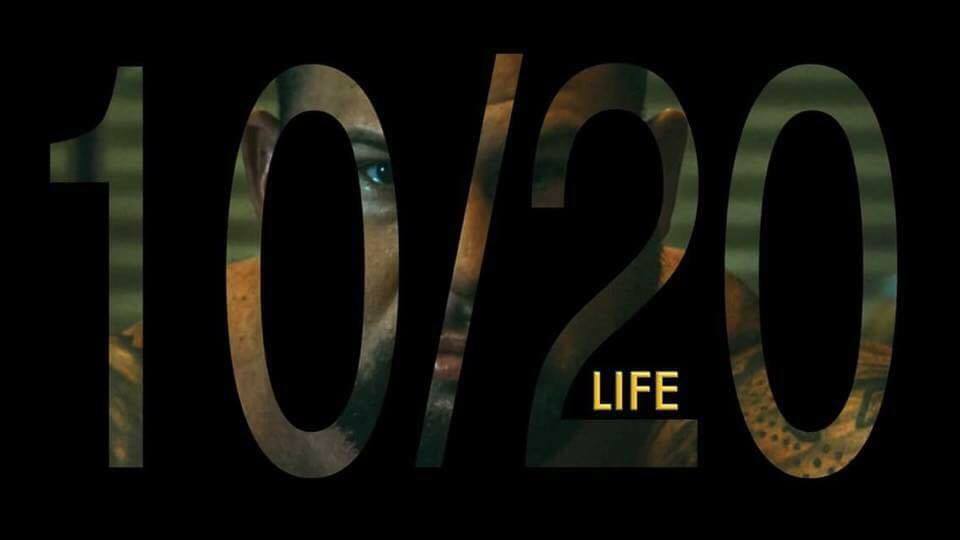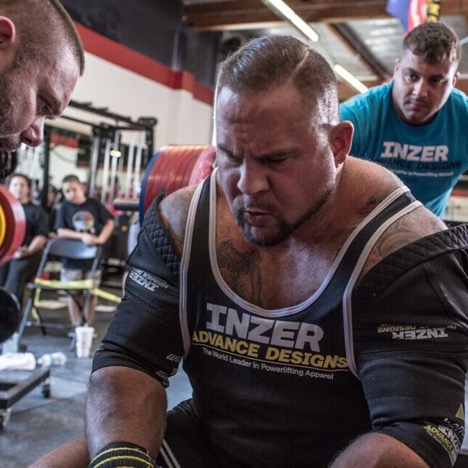
07 Sep Trip to Westside Barbell Part 1
By Brian Carroll
For an even more in-depth look at my relationship and history with Westside Barbell over the last 15 years, please see this article: LOUIE SIMMONS OF WESTSIDE BARBELL- ONE OF MY GREATEST INFLUENCES.
February of 2018, I finally made the trip to train with Dave Hoff and work on a few components of my lifting repertoire I felt would help push me out of my comfort zone. I’ve rarely made pleasure trips to Columbus, Ohio.
I’ve intended to take a trip to Westside (to train, not visit again) over the last two years, ever since Dave Hoff came to my hometown of Jacksonville, FL and competed in Wayne Pullum’s Jacksonville APF Open Challenge in August of 2016. (But, in hindsight, I realize I have only worked over the last two years it seems.)
Dave and I spent some time after the meet in 2016 and figured it would be beneficial to train together as a few of the last “Mohicans” from the “glory years” of the WPO/Pro-AMs and APF Senior Nationals when these were the ‘big’ meet. My wife, Ria, has encouraged me to travel more and visit/participate in training sessions where it could benefit my lifting and knowledge base overall. Fantastic, right?

Dave and I met for breakfast on Wednesday morning, which turned into about 3 hours of in-depth talk on the latest gossip, training, powerlifting, technique, fallacies, and just catching up with two people who have very similar outlooks in many respects.
After our extended breakfast of tons of food and about 35 coffees between the two of us, we both had to tend to obligations/ work and prepare for the training session later that evening.
WEDNESDAY NIGHT BENCH
Wednesday night for Dave and his crew is bench night. Even considering traveling and the drastic weather change, I felt pretty good overall. When you travel, things change; there are typically more variables in general. Living in a hotel room isn’t always ideal when attempting super heavy lifting, but it’s what we all have to deal with during competition and meet travel, so you have to suck it up and roll with it. I felt a little flat and lazy as my routine was off. I’m an extreme creature of habit.
Bench press went pretty well, for Dave at least. I had a hard time setting my feet on the rubber floors, but this was insignificant as I learned so much. Note: One drawback to setting your feet wide-style/out in front of the bench is if you are lifting on rubber tile/mats, it can wreak havoc on your set-up, leg drive, and make for lousy footing, especially if the humidity is high. Admittedly, I couldn’t adjust and ended my bench session a little early. I worked up to 855 for a couple of singles off the two board, but I couldn’t get it right. Shutting down may have been a good thing as it allowed me to shift my focus to watching Dave, bar none the best bencher in the world (maybe ever), a little more closely. I think this alone was worth the cost of the trip.
Dave took a super easy 1115 off the two board as his last lift before we ended the night and left to eat.

People always ask those at the top- “What are the secrets?” “What are they doing that I am not?” In response, I like to ask them what they think ‘it’ is. They usually quip “coaching, supplements, genetics, environment,” which are all factors, no doubt. But, honestly, my answer is one which leads to disappointment for most, while others smile and nod their head when they “get it.”
What is the answer?
In my experience, most of the time it’s the simple fact that the top echelon of lifter who stands the test of time (decades, not years) does the basics better than everyone else, in addition to the witty & accurate responses mentioned above. Not always, but this does play a significant part as they are typically OCD level consistent. This consistency takes time. What does a good veteran in the sport have plenty of? Experience and time under the bar – learning, making mistakes and improving.
It bothers me when people get into a huge hurry to achieve goals. It’s a lack of maturity and a realistic approach. Not long ago, John Meadows made an excellent post on social media about how it drives him CRAZY when rookies message him about the process of turning pro. Here is John’s post {sic}:
“More and more I am getting messages like this..
Random person – John my goal is to win the Mr. Olympia. Can you help?
John – Have you competed before?
Random person – No, but I know I can do it. We’ll do a qualifier, I’ll crush that and then crush nationals. Following year it’s Olympia time.
—————————————————————–
I almost blow a gasket every time I read this. It used to be I’ll work as long as I need to, now it seems everyone thinks they can be an overnight sensation without putting in the work.”
This naivety is summed up very well by John, in my opinion. There are better ways to do things and more efficient ways to attack them, but there are no shortcuts. There is no free lunch; you pay one way or the other.

Back to the topic: it takes time to thoroughly master the basics, much less execute the fundamentals under extreme pressure and with variables, flawlessly. Here are a few things that I extracted from just one bench session with Dave Hoff. Some of these he told/cued me on, others I picked up while watching after shutting down my bench session. Finally, other tidbits I want to share with you I have gleaned from Paul Key, but were driven home and reiterated on this trip as I saw firsthand while they were being executed to perfection. I had to switch from veteran lifter and coach to student immediately.
Ask yourself this question: can you do this when necessary to go to the next level?
- Let the weight settle at the top of the start and the completion of your bench press. Don’t be in a rush to lower or rack the bar. Lock-in extra tight. Not every handoff will be perfect (especially when the weights cross the 800lb mark), so this already gives you a buffer. Settling also allows you to work harder, giving you more time under load/tension. Endurance with stability under load becomes incredibly handy if you have a strict head judge that makes you hold for a long time at the top. It also cleans up the lift and leaves less doubt.
- Take smaller jumps between weights when in the shirt. Once I crossed 600lbs (~80%), Dave suggested I take 50lb jumps vs. 90-100 like I do while under 500lbs. This added work is not only to increase work capacity but to avoid a potential ‘shock to the body’ which can happen with too aggressive of jumps. This strategy also allows you to dial in your shirt and warm it up slowly as it molds to your body, specifically the SDP.
- Have the same training partners hand-off to you each time, from the same side/position. Doing so allows them to know your habits, arm length, how you take the bar, what to cue you on, and generally know your preferences. None of us are perfectly symmetrical; most of us are perfectly imperfect, especially those of us who played a throwing hand dominant sport, i.e. baseball. Have a system where everyone is on the same page. Ideally, your handoff should work like a well-oiled, fine-tuned machine and the lifter should not take a see-saw. Communication is essential, which brings the next point.
- Just because someone is handling you or helping you, doesn’t make them a qualified coach or someone you should lean on for wisdom or sage advice. Ask only lifters/ handlers you trust (not just a slap-dick in your gym) to provide you with direct, concise feedback after every lift to keep you accountable. Ignore the rest. Don’t try to take advice from 5 people at once. For instance, if you are known for your excellent stability & technique on the bench, a savvy coach might be able to point out what could be wrong or off. Even better, they may be able to not only pick up on what you are doing not-so-efficiently but WHY you are doing so. These are the people you should lean on, not people who want to hear themselves coach and yell.
- If components of your training session are flat-out wrong and off, like they were for me on this particular day, shut it down. Know when to say when. I’ve written on this many times, but I learned this all over again even though I came all the way to Westside Barbell to train. No matter the situation, if you’re not in a competition or the training session is not ‘do or die’ with a meet imminent, live to fight another day. Learn from the training session, avoid pushing too hard and tearing something off, or ruin your confidence for a period.
In part 2, I’m going to discuss Friday night’s squat session at Westside Barbell and what I learned there. The seemingly, at the time, failed bench press session Wednesday night fueled me to make a few minor adjustments mentally and have an excellent squat training session just two days later.
Lessons like these are what make powerlifting so awesome and applicable to everyday life. Everything that happens is a potential test and when received correctly can be a blessing.
You can read more from Brian, including his articles and training logs HERE. Also, head over to the PowerRackStrength.com store and grab a copy of his best selling books 10/20/Life 2nd Edition and Gift of Injury.
Brian Carroll
Latest posts by Brian Carroll (see all)
- Quick Rant: Core Exercises - July 26, 2024
- Physical Therapy Fails for Back Pain - July 25, 2024
- Quick Rant: Physical Therapists - July 19, 2024





Sorry, the comment form is closed at this time.